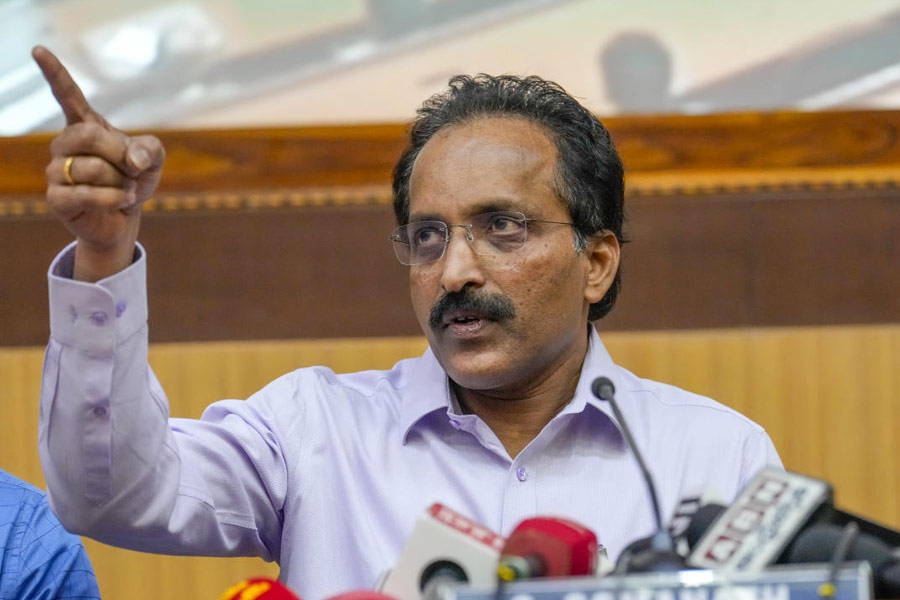ISRO chariman S Somanath on Sunday said the success of Chandrayaan-3 mission connected with the hearts of the people and the successful soft landing on the Moon was a "moment of glory for Indians."
With India becoming the fourth nation to land on the Moon and the first to make a soft landing on the south pole of the lunar surface, he said, it was not a 'small accomplishment.'
"Chandrayaan-3 created an emotional exuberance in the minds of youngsters, children and to people who study science and technology. We were able to showcase the whole of accomplishment to the entire country driven by Prime Minister Narendra Modi's directives to make sure the success must go to everybody," he said.
The secretary of the Department of Space made those comments during a session 'Unlocking the potential of Aerospace and Defence Sector through the Economy' organised on the lines of Global Investors Meet (GIM2024) by the Tamil Nadu government here.
"See Chandrayaan-3 actually connected with the hearts of the people. We were able to do that. The landing on the Moon was not a scientific event for everybody. It was a moment of glory for entire Indians", he said.
Observing that the mission was developed entirely by India with 'home-grown' knowledge and 'technology', he said, "it is high end scientific accomplishment. We are the fourth to land on the Moon and the very first to land on the South Pole. It is not a small accomplishment."
"Whenever I travel around the country, wherever I meet youngsters they say they want to join ISRO and everybody wants to be my astrophysicist. After Chandrayaan-3, there is a demand for core engineering courses," he added.
Somanath pointed out that even vacancies in engineering colleges were getting filled after Chandrayaan-3 mission success, since there is better demand for core engineering streams.
"This is a motivational factor on how a great scientific experiment put appropriate in front of people can create a big impact," he said.
To a query, he said after the Chandrayaan-2 failure in 2019, the first and foremost challenge was to understand what went wrong in it and to identify the problem.
"In a failure scenario, multiple events cascade to create an issue and that is the crucial part of it to understand what went wrong and make a sense out of it." After identifying the issue, it has to be overcome and has to be validated so that there is no more failure in future.
"So, validation process went for another two years and then building the space system, testing it rigorously. The only goal is to land it softly and this was the direction which I gave (to the scientists)." he said.
Scientists at the Bengaluru-headquartered space agency also delayed the launch by another six months, so that there is validation for software, hardware and others.
It required huge amount of work. Almost 10 years of work went for Chandrayaan-3 mission, the scientist said.
After lifting-off on July 14, 2023, India's third Moon Mission reaped success as Chandrayaan-3 spacecraft made a soft-landing on the south pole of lunar surface on August 23.
The Centre has notified the day as 'National Space Day' commemorating the remarkable feat.
Except for the headline, this story has not been edited by The Telegraph Online staff and has been published from a syndicated feed.












